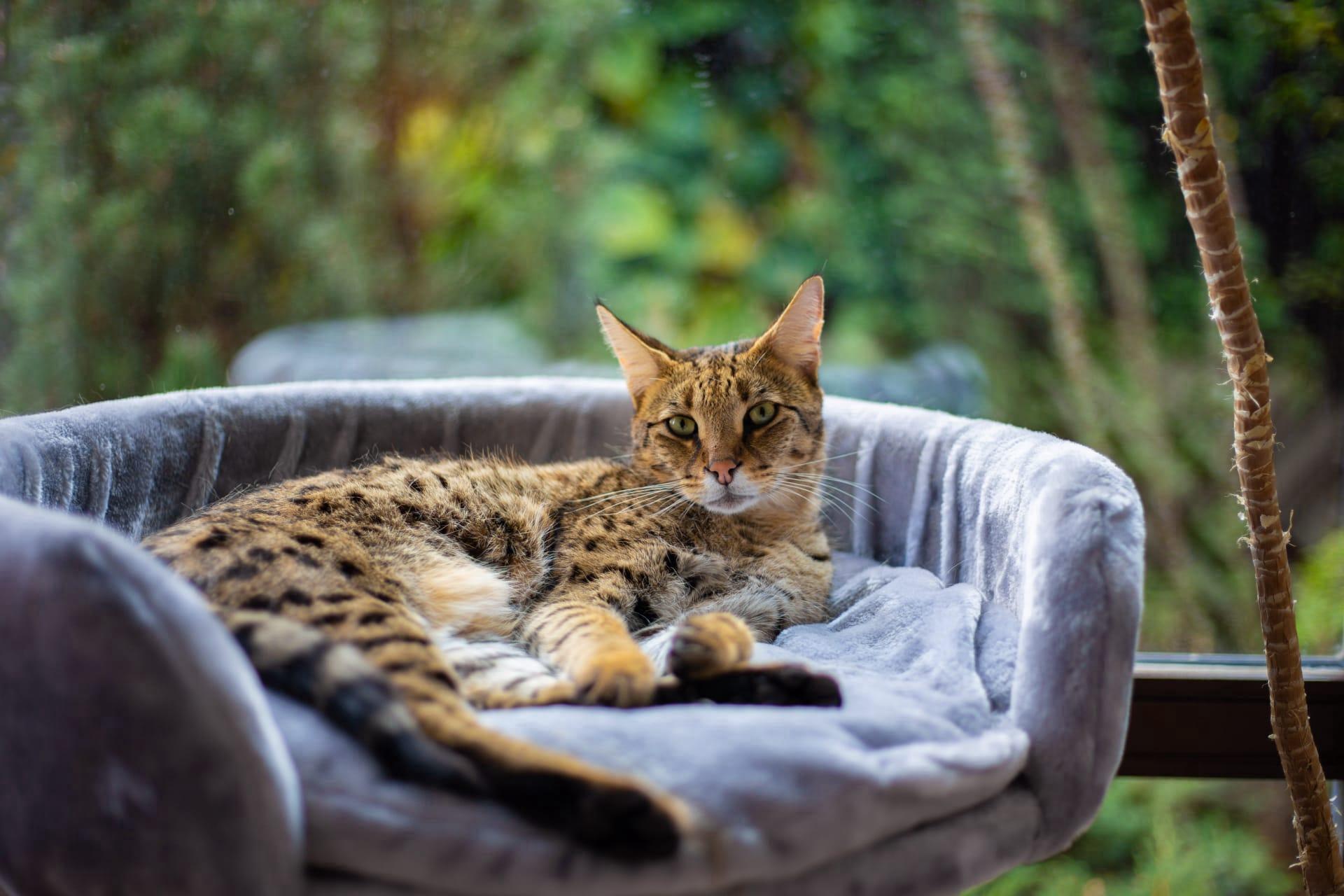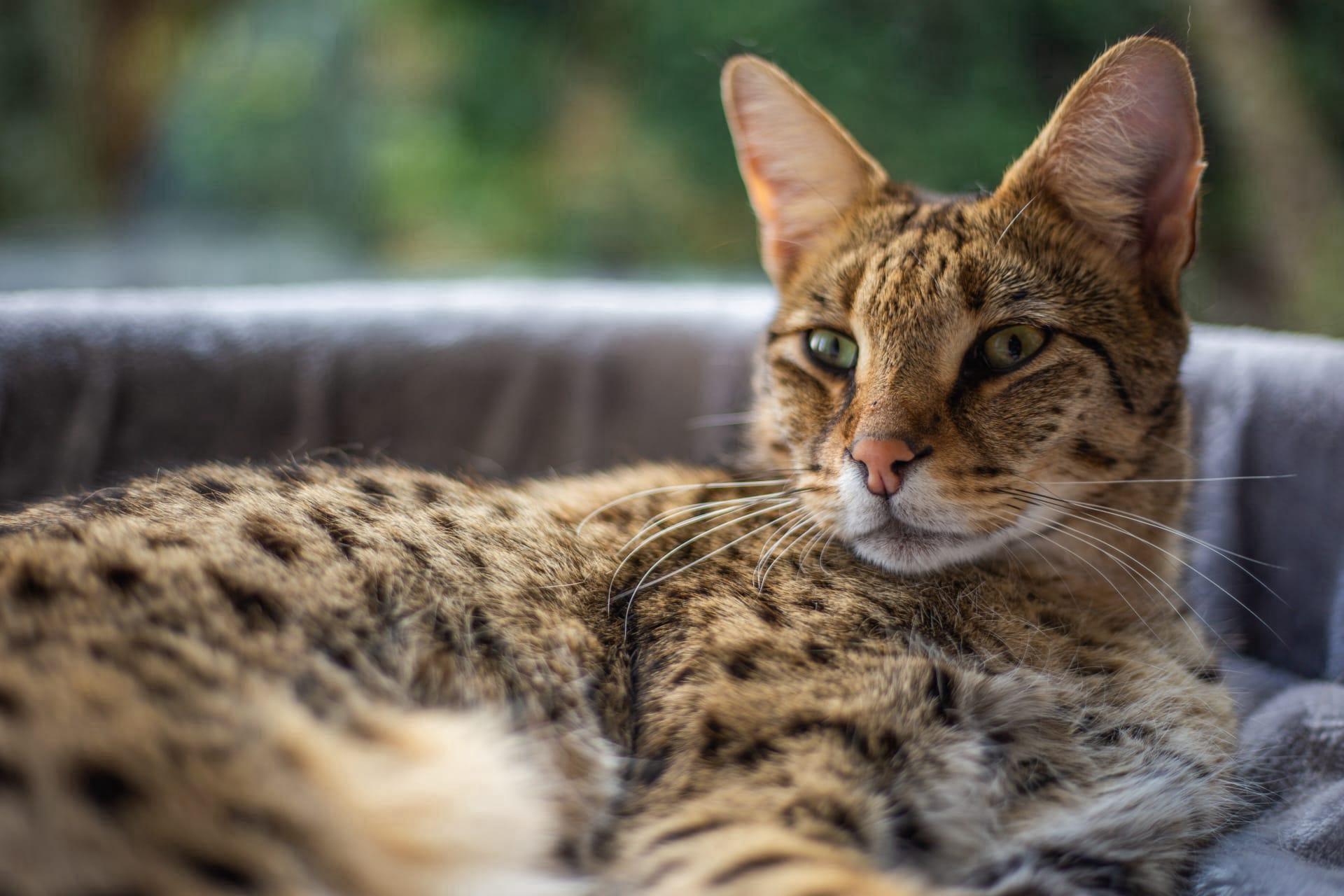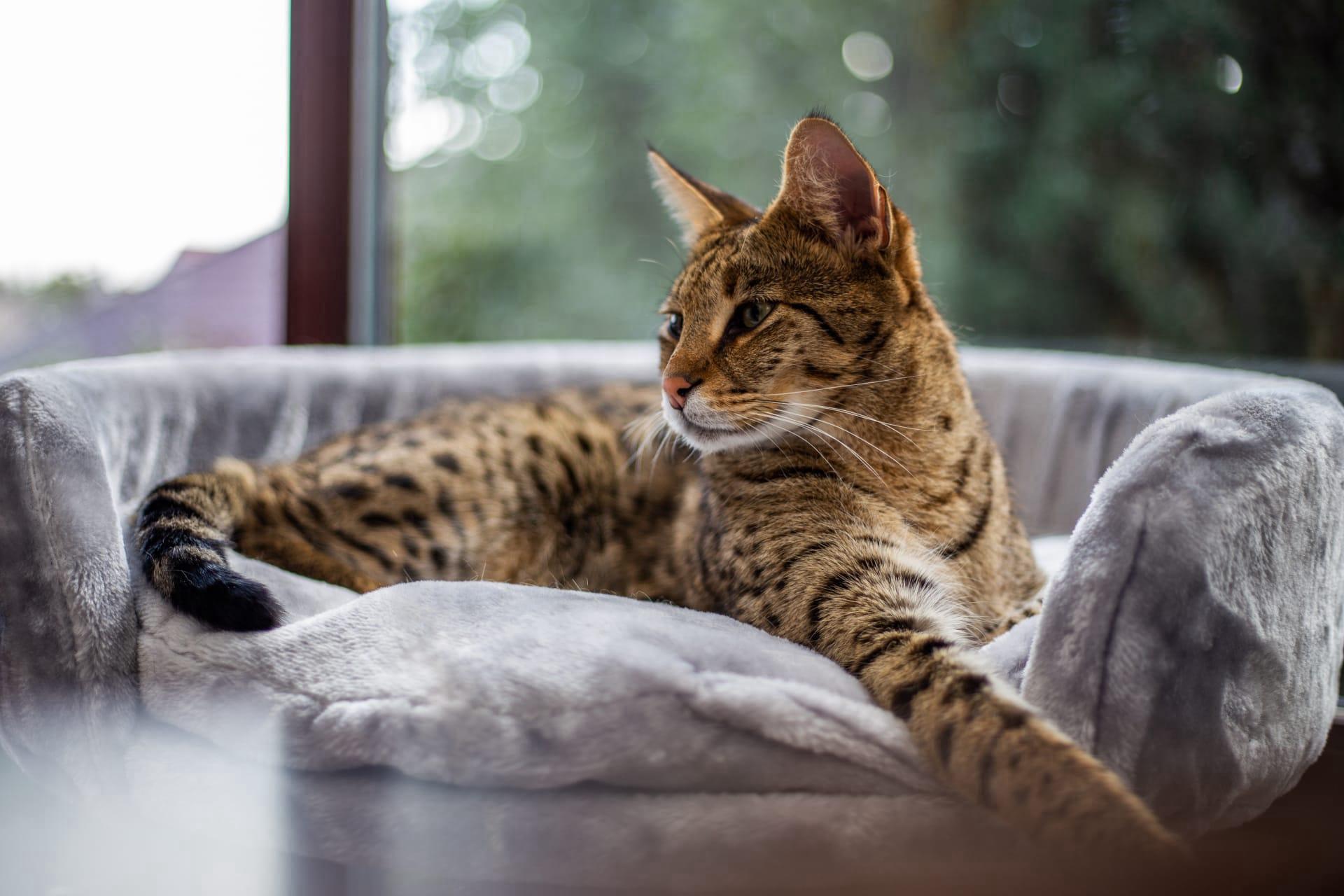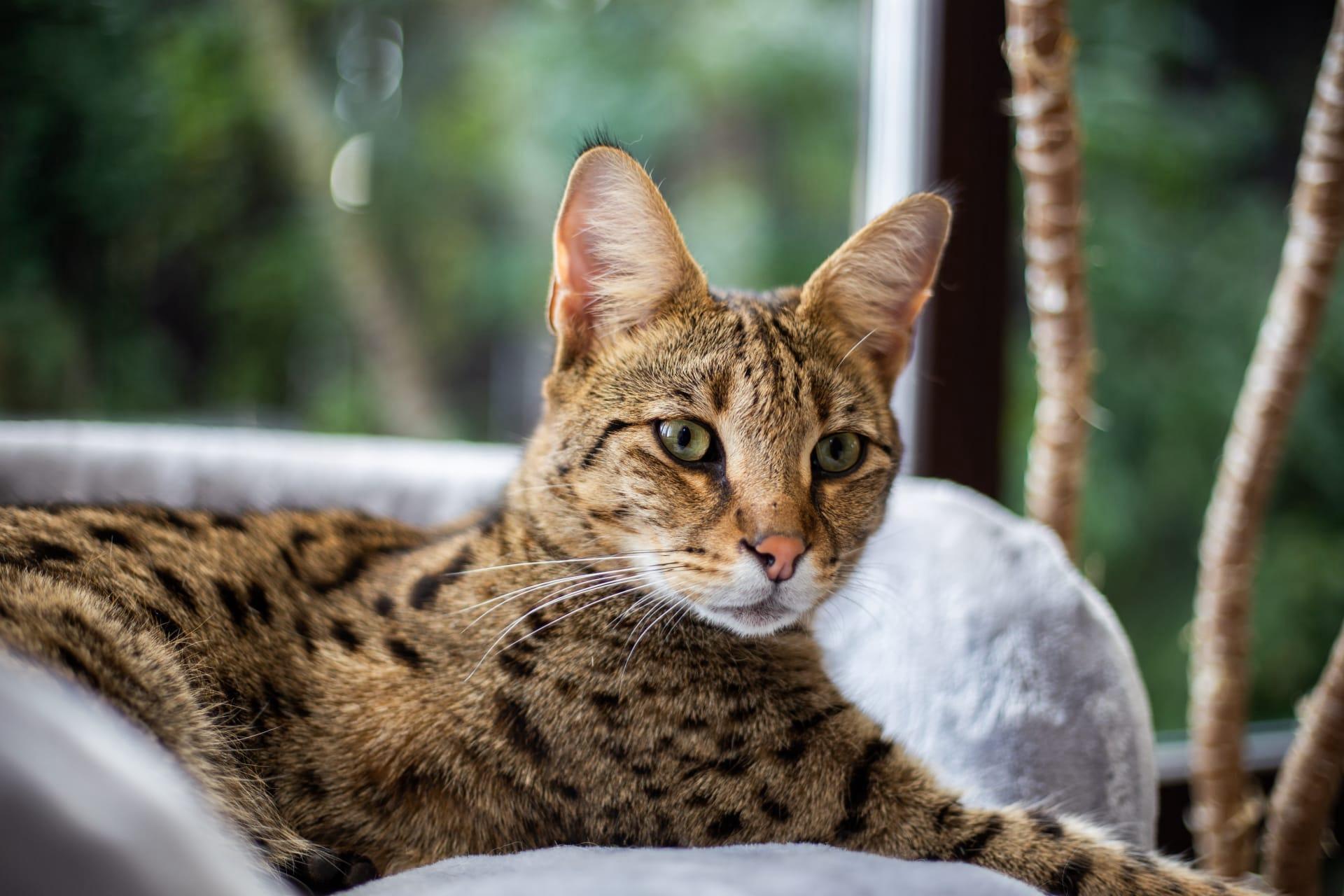1
The Savannah cat, a hybrid breed between a domestic cat and the wild African serval, boasts a striking appearance with a remarkably tall and slender body. On average, Savannah cats can reach heights of up to 17 inches at the shoulder, making them one of the tallest domestic cat breeds. Their long legs contribute significantly to their height, giving them a unique, elegant gait reminiscent of their wild ancestors. This physical trait not only enhances their aesthetic appeal but also provides them with an exceptional jumping ability, enabling them to leap distances over 8 feet horizontally and heights up to 3 feet from a standing position.
Aside from their physical prowess, Savannah cats are known for their remarkable intelligence and social skills. They possess a keen ability to learn tricks and commands, often compared to dogs in their trainability. Savannah cats are highly interactive with their human companions, displaying a strong bond and loyalty similar to canine pets. Their intelligence is complemented by a curious nature, making them excellent problem-solvers. This breed's sociability extends to other pets and children, with whom they often form close, playful relationships, showcasing their adaptability and affectionate demeanor within a household setting.

2
One of the most intriguing facts about Savannah cats is their water affinity, a rare trait among domestic cats. Unlike most felines who shy away from water, Savannahs are known to exhibit a strong attraction to it. They often demonstrate behaviors such as playing in water dishes, joining their owners in showers, or even swimming in pools. This unusual trait is believed to be inherited from their serval ancestors, who are known to reside near water bodies in the wild and are adept swimmers.
Another distinctive feature of the Savannah cat is their vocalization, which includes a wide range of sounds beyond the typical meow. They are known to chirp, a sound characteristic of their serval heritage, especially when excited or seeking attention. Additionally, Savannahs can hiss quite differently from domestic cats, emitting a snake-like hiss as a defensive mechanism. This sound is more intense and serves as a warning to potential threats. Their unique vocal repertoire allows them to communicate more effectively with their owners and express a broader spectrum of emotions and intentions.

3
The diet of a Savannah cat is another aspect that sets them apart from most domestic cats. Due to their hybrid nature and high energy levels, Savannah cats thrive on a diet that closely mimics that of their wild ancestors. Many owners choose to feed them a raw food diet consisting of meats that provide the necessary nutrients for their health and vitality. This diet supports their muscular build, dental health, and energy requirements, ensuring they maintain their athletic physique and vibrant health.
Savannah cats have a distinctive coat pattern that resembles that of their wild relatives, featuring bold spots and stripes that vary significantly among individuals. This pattern is not just for show; it has a practical application in camouflage, similar to their serval ancestors in the wild. The variety in coat patterns and colors, ranging from golden to silver and black, makes each Savannah cat unique. Their coats not only contribute to their aesthetic appeal but also serve as a reminder of their exotic heritage.

4
Savannah cats are not only known for their unique characteristics but also for their role in allergy-friendly households. Despite common misconceptions, many Savannah cats are known to produce less Fel d 1, the primary allergen present in cat saliva, making them a suitable pet option for individuals with mild to moderate cat allergies. This trait varies among individuals but has been a relief for many allergy sufferers who wish to have a feline companion.
The breeding history of Savannah cats is marked by their official recognition as a breed in 2001 by The International Cat Association (TICA). This recognition was a significant milestone, considering the breed's recent origin in the 1980s. The development of the Savannah cat breed involved careful breeding practices to ensure a healthy, sociable, and physically impressive cat that retains the exotic appearance of the serval while possessing the temperament suitable for family life. This breeding effort has led to the Savannah cat's increasing popularity among cat enthusiasts and pet owners worldwide.

5
Regarding their lifespan, Savannah cats are known for their longevity compared to many other domestic cat breeds. With proper care, including a balanced diet, regular exercise, and routine veterinary check-ups, Savannah cats can live up to 20 years. This extended lifespan is attributed to their hybrid vigor, a result of crossbreeding, which tends to enhance genetic health and resistance to certain diseases.
The environmental adaptability of Savannah cats is exceptional. They are known to adjust well to various living conditions, from spacious homes with access to outdoor environments to apartment living, as long as they have enough space for physical activity. Their adaptability is complemented by their intelligence and curiosity, making them capable of thriving in diverse environments. This adaptability makes Savannah cats suitable companions for a wide range of lifestyles, provided their physical and mental stimulation needs are adequately met.